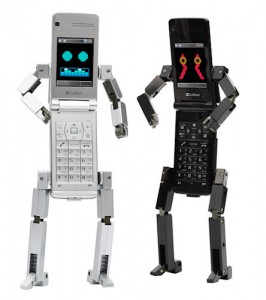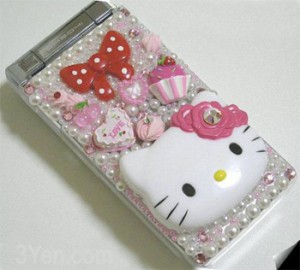Back from Keitai-land
I was fortunate to live in a country consumed with mobile technology, and witness the evolution of keitai a few years before smartphones were on the market. Many people in Japan had a very personal connection to these devices, mostly flip phones, decorating them and dangling the many charms from their pockets – an entire industry devoting to glamming up the plastic and metal casing. Of course there were many well-designed features: cameras, texting, ringtones to distinguish one person’s keitai from the millions is use across the country. The phones could be scanned at convenient stores like a credit card, allow commuters to pre-pay for their bus and train tickets, and upload information from QR codes. Endless options available as it seemed everyone in the country embraced mobile technology.
What impressed me most was that these technological advancement seemed to be driven by the tech-savvy users rather than the top-down “change the world” innovation coming from the late Steve Jobs and other North American smartphone designers (Android, at least, seems to have tapped into the geeky-fun market with their mobile devices). People were developing their own ways of using the mobiles, and learning from others. Perhaps the best example of this learning are the emoticons and emoji (still and animated pictures) that are frequently inserted into text messages. It was possible for children to have conversations with each other entire through symbols rather than typing words. From what I could tell, people just invented meaning for them, sent them out to their friends, and soon these symbols caught on like wildfire. For sure each mobile device came with an instruction booklet, but most of this common knowledge came from a society some have compared to the Galapagos Island in terms of m-learning.
When I first arrived in Japan, August 2005, I must admit being skeptical about needed to own another cell phone – I had owned a couple in Canada, so what! – and held out for a year without owning a keitai, but witnessing the multiple ways in which these phones proved useful to my friends. It wasn’t until met my wife, got my flip phone and signed up on the Vodafone’s Double White plan (free calls between friends and family, as long as they were Vodafone users) that I became part of the culture. Arriving back in Canada in 2008, shortly after the iPhone 3 was released, I was very eager to get my hands on this game-changing device (I was sold even before I left Japan). Two surprises since making the return and entering the smartphone market: 1. even with the Internet in my pocket and thousand of apps to choose from, I still don’t think that smartphones have reached the same level of usefulness as found with Japan’s keitai, and 2. when the iPhone debuted in Tokyo a few months later, it wasn’t as popular as Apple was expecting. I miss the keitai world I left behind, and wouldn’t be surprised to see evidence of more m-learning in Japan when I eventually return to my wife’s home country.
Posted in: Week 11: Mobiles


David William Price 4:43 pm on November 14, 2011 Permalink | Log in to Reply
Thanks very much for your post.
Japan is extraordinarily mobile-focused. My partner is Japanese and it never fails to surprise me how her family does not use computers at all but relies on their cellphones for all of their email needs. On the other end of the technological and economic spectrum, India and Africa similarly depend on cellphones for access to the Internet and social media. One chooses it for aesthetic reasons, the other out of necessity.
Perhaps the most surprising thing is despite how sophisticated modern cellphones are, previous generations provide substantial options for m-learning, as you’ll see in the coming days.
David William Price 5:03 pm on November 14, 2011 Permalink | Log in to Reply
I should be asking what it is about the Japanese cellphone experience that you miss so much? How do you feel about m-learning in the Japanese context? In North America? Do you see any differences?
kstooshnov 8:57 am on November 16, 2011 Permalink | Log in to Reply
Hi David,
Thanks for your reply, as well as starting off this engaging discussion on cellphones and learning. Now that I know your partner is also Japanese, your comment last week on her critical thinking, adaptation and creativity as a chef make complete sense; not only were the Japanese people I met in Kanazawa experts in mobile technology, but had a fascination of good food that makes celebrity chefs like Jamie Oliver, Rachael Ray and Wolfgang Puck seem like amateurs. The most common question anyone got when they returned from a trip somewhere in Japan was “what did you eat?” This enthusiasm for food, travel and finer things translates easily into the love of well-crafted, useful technology, such as their cellphones.
What I miss most about m-learning in the country was how ubiquitous it is, evidence of creativity could be found everywhere, but usually treated as no big deal. North America is still getting to that point where daily use of the latest innovation is as commonplace as it is in Japan. Perhaps it might have something to do with the freedom to network: in Japan, learning how to use a cellphone is very decentralized, each person literally taking learning into their own hands. North Americans are still being sold on the concept, and look to their newspapers, TVs and computer screens for the expert’s advice, or the market, to determine how they will learn. As Prof Vogt reminds us, educational technology is a “get rich slow” market, but it was clear to me in Japan they have already raised the bar for m-learning.
Kyle